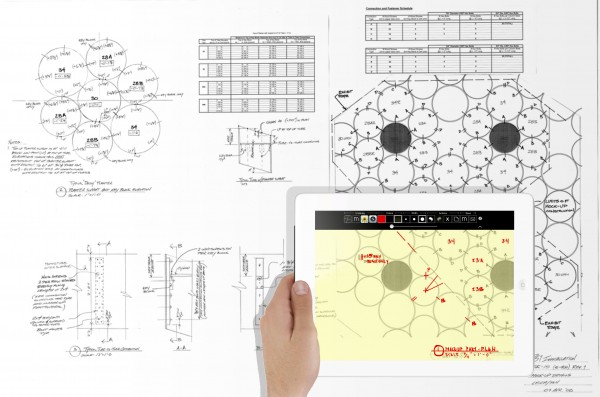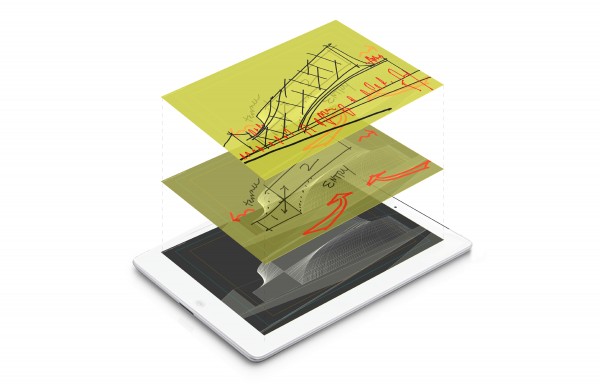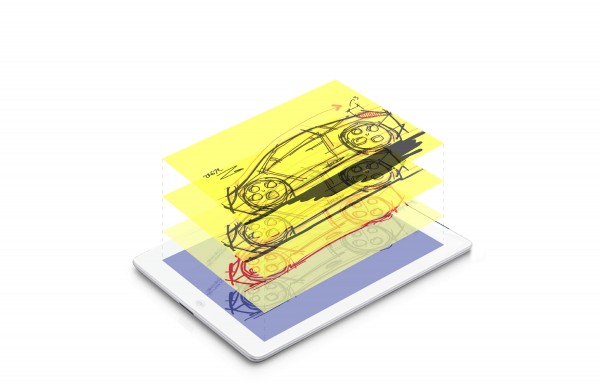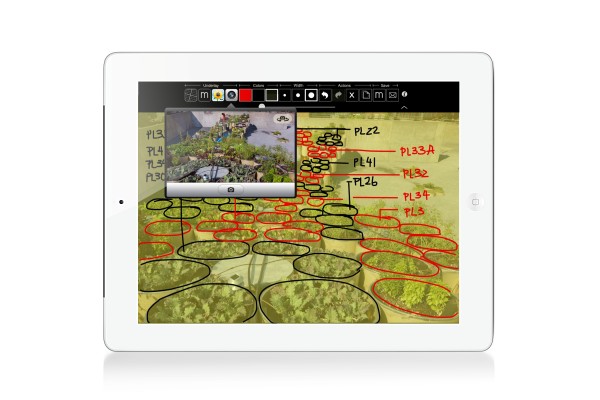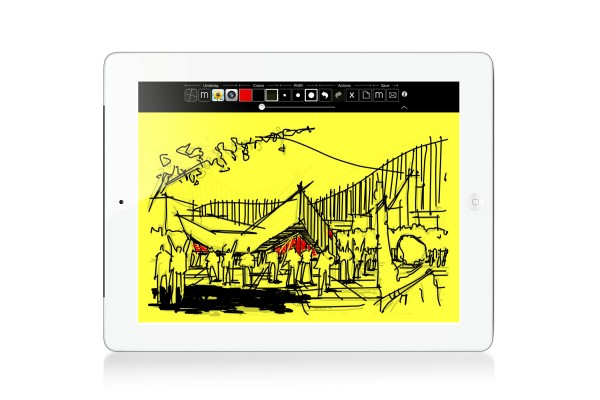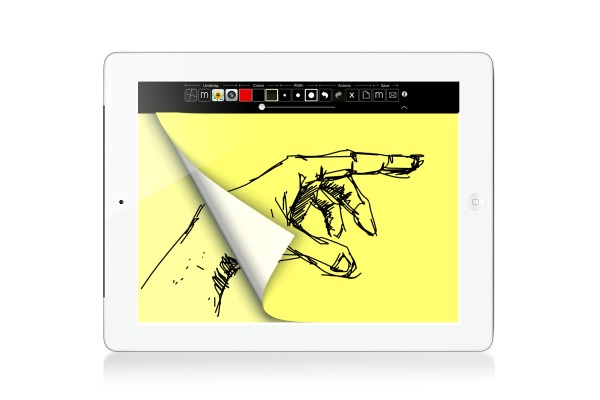The Morpholio Project announces the launch of its second app, simply called Trace. The app explores the role of technology in the conceptual phase of the design workflow through a digital version of trace paper, and fosters communication amongst a global design culture. Trace, essential to any design or creative process, allows users to instantly draw on top of imported images or background templates, layering comments or ideas to generate immediate, intelligent sketches that are easy to circulate.
The uniqueness of Trace is most visible in two primary modes. One is communication, in which the user can simply trace over something in order to give feedback or convey information quickly, and graphically. The second is idea exploration. “You are plugging yourself into a recursive feedback loop, as you iteratively build up an idea, taking several passes at it,” says co-creator Mark Collins. Both allow creative cultures to maintain conceptual thinking as well as critical feedback throughout the design process.
Created by architects, Trace addresses a number of questions about how the proliferation of device culture, social networking, and cloud technology are changing the way designers work and connect on a daily basis. It has been predicted that in 2020, there will be 50 billion mobile internet connections worldwide, the equivalent of seven devices per person. It is crucial that experimentation and research that harnesses the power of these devices, and makes tools specifically for the design and creative fields, occur in tandem with this rapid evolution of culture and process.
Time Tested Process + New Technology
What are the origins of an idea? How do we layer thoughts to create a generative workflow? How do we use memory as a way of distilling the most important decisions? Those that have ever used trace paper know that the drawings you create are unique in multiple ways. “The layers of paper literally act like a brain.” says Collins, “They allow for remembering (by retracing) and forgetting (by adding new layers).” “These sketches are indebted to the many layers of thought from which they evolve, and inherently become a drawing that represents the sum of your most important ideas.” says Co-Creator Jeffrey Kenoff. “For any creative culture, drawing on trace is just a different act, serving as a tool for generating ideas, communicating feedback and allowing one to truly think freely.”
Other Evolutions in Design Culture
In the architectural world, trace can also be seen as an antidote to the prevailing digital model based design process, including parametric modeling and BIM (Building Information Modeling). The ease of creating automated or data based models can lead to a bypassing of crucial steps in the conceptual process, particularly if forced to be far too specific, far too early. Design tools should dis-inhibit through freedom and flexibility – something most CAD tools could strive further towards. It is a goal of the Morpholio Project to make software that opens up exploration and super-charges the creative brain, keeping constant the various streams of valuable feedback. “The emphasis is on design processes that are reflective and conceptual versus merely iterative.” says Co-Creator Anna Kenoff. Trace argues that it is valuable to take sketches out of CAD programs, draw on top of them; analyzing intention, concept, or diagram, and then plug them back in. “Whereas BIM software improves production optimization, the Trace software is about assisting and evolving design process traditions by exploring new relationships between brain, hand, and technology.” says Co-Creator Toru Hasegawa.
How Trace Works
The Trace App is beautifully simple, intelligently clean and familiar in its canary yellow background. It begins with a single page on which to sketch and allows for a variety of underlays, including templates, photos, or any imagery pulled from the cloud. From the first line it provides effortless access to a variety of simple functions. The key function however is the “New Trace Layer” button, which allows a user to take their sketch and add another sheet, then another, and another until the idea or sketch is built to its final stages. With each layer the user can adjust the opacity to either highlight or hide the information behind it. “Tracing over something is absolutely the foundation of the app,” says Hasegawa, “Layers of trace paper are not the same as “layers” in Photoshop or other tools. Here, they are the stacking of ideas, as opposed to the organizing of files.”
In addition to using trace to build an idea, the app simplifies many other forms of feedback in the design process. The software imagines gathering information such as field conditions, construction photos, contact sheets, or sourcing imagery, and streamlining the process of editing, commenting and communicating instantly in sketches with an efficiency that words alone cannot achieve. Trace will also be integrated with the Morpholio app which works off the portfolio model to create an interactive platform in which to present, share and critique imagery. Morpholio’s groundbreaking “Eye Time” functions combine with a global community of users to provide invaluable feedback on work shared through its variably public arenas: Crit, Pinup, and Community. Trace expands upon Morpholio’s notion that that feedback is the most invaluable and generative resource for designers, and further propels crucial design processes into the cloud era.
Credits
The Morpholio Project Co-Creators: Jeffrey Kenoff, Mark Collins, Toru Hasegawa, Anna Kenoff
Sponsors: Dyson, Herman Miller, 3Form
Collaborators: Fernando portal, Community Director; Ciara Seymour, UX Director
Contributors: Yang Hua, Dan Forest, James H. Thompson, Victor Sardenberg, Asakura Aya
Sketches: Courtesy of Ahmed Elhusseiny, Anna Kenoff, Anna Pietrzak, Audrey Choi, Ciara Seymour, Devin Seymour, Ezio Blasetti, James Kehl, Javier Galindo, Liz Ricketts, Milan delVecchio

